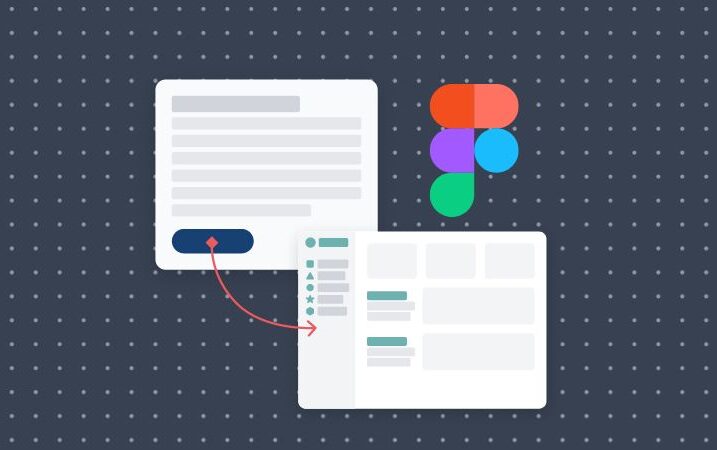Flatiron School’s Product Design course offers a unique take on digital design education. Most courses will only prepare students for specializations in UX (user experience) and/or UI (user interface). That’s not the case at Flatiron School. Our course provides a broader education in Product Design, which ultimately sets students up for a holistic career in Product Design or specializations in UX or UI. In addition, we also teach tools concepts that are in-demand with hiring managers (in fact, we consistently have hiring managers validate our curriculum) such as ethical and inclusive design, Figma, and Webflow.
Here’s a closer look at our curriculum.
Ethical & Inclusive Design
Our course begins by teaching ethical and inclusive design. Inclusion, diversity, and learning from people with different perspectives is part of our core values, so we felt it critical to make this the foundation of our curriculum. On their very first day, students will begin to learn how to make a digital product accessible and inclusive to all people.
Foundational Research
Great design starts with research. Students will learn how to frame research questions and how to choose qualitative and quantitative methods to answer them. They will also develop their skills in synthesizing data, identifying opportunities, and presenting their findings.
Foundational research means collecting various types of data points to improve or create a digital product. One example is conducting market research and user interviews to add a new mobile app feature.
Ideation and Innovation
Students will get to leverage their creativity and problem solving skills to ideate and innovate solutions for the product. Students will learn the importance of sketching and rapid prototyping to evaluate early ideas.
Ideation and Innovation are steps within the Product Design process to constantly look for ways to improve the product. By rapidly sketching out ideas in a brainstorm, students are able to provide different avenues to solve a problem.
Visual Composition
Students will learn the principles of User Interface (UI) Design. From discovering what visual designs draw user’s attention to the best practices for content layout, students will begin to master visual composition to effectively communicate through fonts, shapes, lines, colors, images and negative space.
Typography and Color
Typography and Color are main components of the User Interface, which is meant to simplistically communicate thoughts and ideas in an impactful way. Students will dive into color theory and typography. Students are encouraged to seek instructor feedback to continually refine their skills in applying color themes to the elements of a UI, creating visual balance, emphasis, organization, and direction of a product.
Interaction and Animation
Students will be introduced to interaction and animation principles as they dive deeper into how detailed designs can turn a good digital product into a great one. Interaction and Animation designed with the intent of making the user interface meaningful and simplistic will differentiate the product.
Information Architecture
Students will learn how to organize and structure information in the most effective way by building clickable prototypes that present the interactions and navigation possibilities of a product. Information Architecture is a vital component of Product Design because designers must coherently and effectively lay out content to effectively communicate with users.
Design For The Web
Unlike other design programs, Flatiron School’s Product Design course teaches students the basic web development languages of HTML and CSS. Students will graduate with enough HTML and CSS knowledge to be highly competitive in the job market. In addition to basic web development languages, students will also learn how to leverage responsive designs for various screen sizes and how to hand-off designs to developers.
Designing Mobile Applications
Students will design mobile apps for both Android and iOS while prototyping designs natively on their respective operating systems.
Product Strategy
Students will learn the basics of a product strategy as well as approaching the product lifecycle with both the Agile and Lean methodology.
Working in Cross-Functional Teams
Learn to work cross-functionally with various teams from Software Engineers to Product Managers to Marketing, Sales, and Operations. Students will be equipped to understand the various functions of other teams, while having an arsenal of tools to work efficiently across teams.
Information Design
Information design is the practice of presenting information in a way that reduces uncertainty and makes it accessible and easily understood by most users. People consume information constantly–including instructions, figures, data, and tables. Designers must work with a set of defined objectives to ensure the right message is transmitted clearly and accurately.
Specialization
Students will be able to choose whether they would like to dive-deeper and specialize in User Experience Research, User Experience Design, or User Interface Design. Specialization helps a designer focus in areas of passion whether it is identifying opportunities through research, improving user experience through sketching or fixating on the visual details for a world-class user interface.
Communicating Design
Students will practice clear writing while applying best practices for designing a presentation – all with the intent of mastering visual storytelling.
The Product Designer Portfolio
Students will create a compelling portfolio of work, intended to catch hiring managers’ eyes.
Career Coaching
Graduates receive up to 180 days of one-on-one career coaching sessions. This includes resume reviews, job search advice and support from industry experts, and mock interviews.




